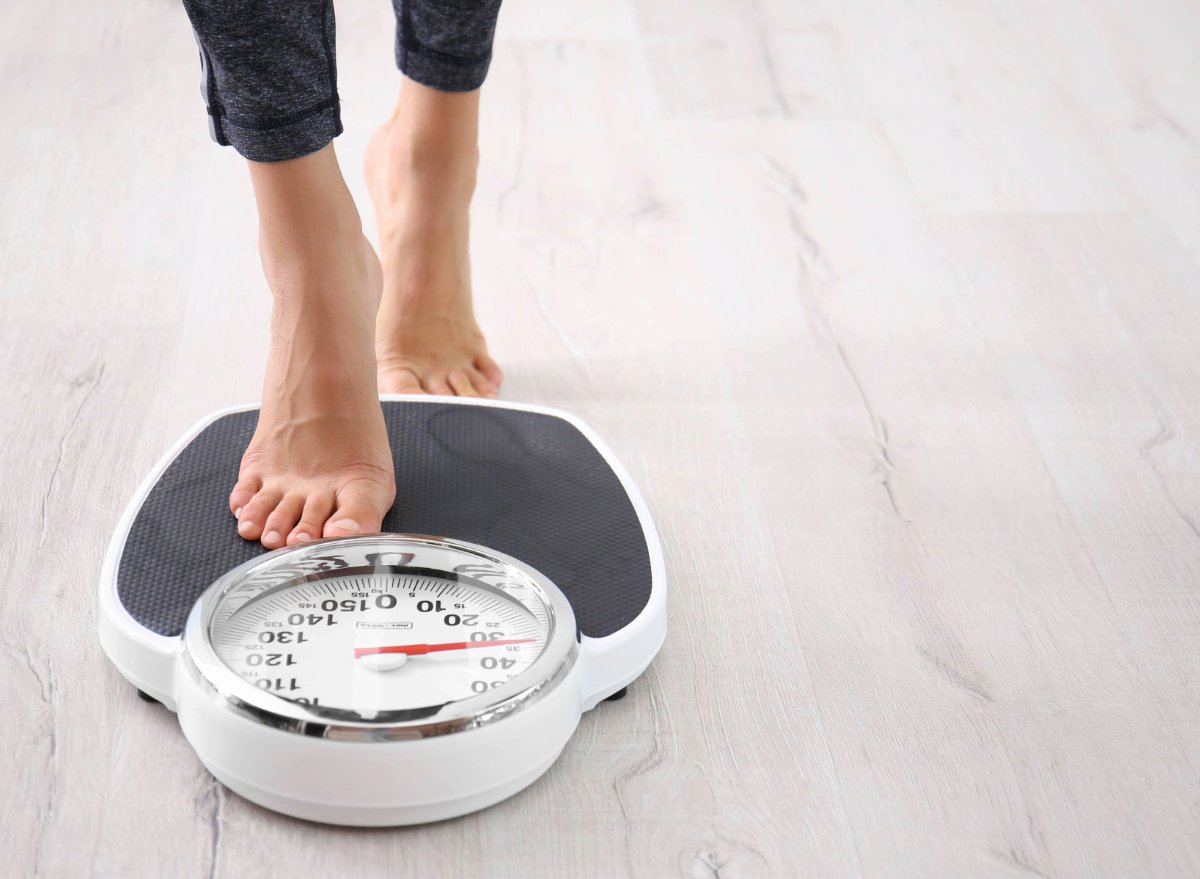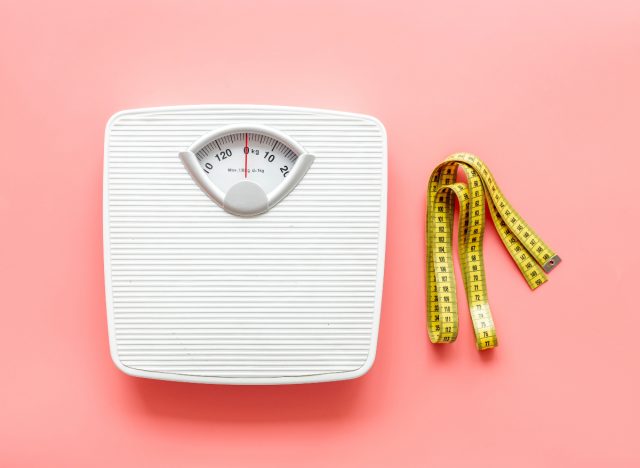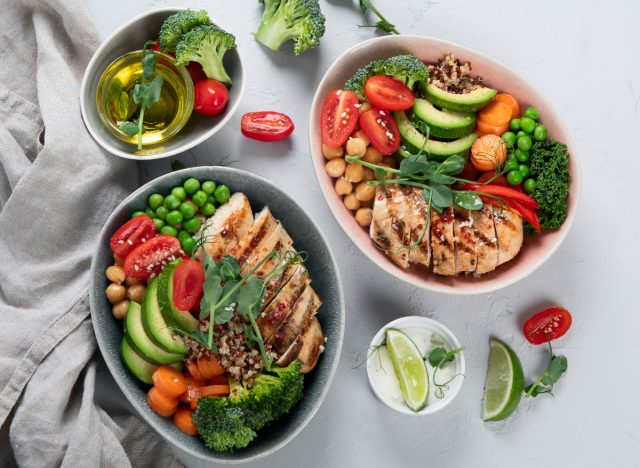Here’s How Much Weight You Can Safely Lose in a Month

A common desire for many dieters is to lose weight fast. But how fast is too fast when it comes to dropping unwanted pounds? We spoke with The Nutrition Twins®, Tammy Lakatos Shames, RD, CDN, CFT, and Lyssie Lakatos, RD, CDN, CFT, who sit on our Medical Expert Board, and learned how much weight you can safely lose in a month. The Nutrition Twins also share some tips on how to reach that goal in one month’s time. Keep reading to learn more, and when you’re finished, be sure to check out I Drank Green Tea Instead of Coffee for 30 Days & Experienced 4 Life-Changing Benefits.
How much weight can you safely lose in a month?

According to the Nutrition Twins, safe and healthy weight loss means losing one to two pounds each week, which amounts to four to eight pounds a month. “It’s possible to safely lose more weight than this in the first month, especially if someone has a lot of weight to lose, or they’re a bigger person,” they explain. “And although we have had clients who have safely lost 20 pounds in the first month and kept it off, this isn’t typical.”
The Nutrition Twins point out that most individuals who shed 20 pounds during the first month (or lose weight too fast) are also at risk of losing water or muscle tissue. “If you lose muscle tissue, this can completely backfire since lean muscle tissue keeps your metabolism speedy, and the more you have, the better for weight loss,” they tell us.
Another reason why people usually shed weight fast is if they’re on a crash diet, which isn’t healthy or easy to stick with in the long term. These individuals end up putting the weight back on when they can no longer keep up with such a strict eating regimen.
Diet and exercise tips to lose weight in a month:
1. Be mindful of stabilizing blood sugar during all snacks and meals.

When it comes to being successful at long-term weight loss, it’s important to concentrate on stabilizing your blood sugar every time you eat, whether it’s a meal or a snack. This will help you avoid energy crashes which could result in unhealthy cravings for refined carbs and sugar.
“Sugar crashes also trigger the release of cortisol, the belly fat hormone,” The Nutrition Twins note. “To ensure that blood sugar levels remain stable, the key is to include a source of protein like skinless chicken or turkey breast, fish, seafood, eggs, tofu, or beans, combined with a source of fiber, like the fiber found in vegetables. Protein and fiber both cause a gradual digestion, so blood sugar doesn’t come plummeting down, particularly after eating a carbohydrate.”
Keep in mind that you can eat carbohydrates. Your muscles and brain are both powered by carbs. It’s crucial to pick fibrous, whole-grain, nutrient-rich carbs in tiny portions. The Nutrition Twins recommend 1/2 cup to 1 cup of whole-grain carbs such as oatmeal, brown rice, or quinoa. However, this will vary based on your activity level and size. Always pair your carbs with protein, and stay away from refined and processed white carbs.
2. Keep a food journal.

It’s a smart habit to keep track of what you consume. We’ve recommended this tip many times—for good reason. It really works!
According to The Nutrition Twins, “A study by Kaiser Permanente proved that recording what you eat will help you lose twice as much weight. The key here is that it holds you accountable, and additionally, sometimes being made aware of all the times you took a candy from the office candy jar, or you split an order of fries, can be really eye-opening.”
3. Start meals with vegetables.

Preparing veggies with a dash of lemon and spices is the way to go. You can eat as many veggies as you’d like when they’re not drowned in oil, butter, or sauces. The one exception to the rule is starchy vegetables like peas, corn, and potatoes.
“Starting your meal with vegetables takes the edge off hunger, fills you up, and leaves much less room in your stomach for the heavier items at the meal,” The Nutrition Twins tell us. “You’ll also begin your meal by stabilizing blood sugar since you’re filling up on slow-digesting fiber. Use lemon, herbs, and spices to flavor your vegetables—they’ll add zest and excitement and they’re basically calorie-free, and like vegetables, they pack in antioxidants that squelch inflammation. This is big when it comes to weight loss since inflammation makes weight loss harder and makes it easier to gain weight.”
4. Be true to your favorite cardio exercise.

Pick a cardio, any cardio! The key is committing to one form of cardio, four days each week. If you just started exercising, it’s not necessary to go all-out with interval training quite yet. Simply choose the exercise you enjoy doing, and get moving.
The Nutrition Twins suggest, “If you’re just getting started, for example, and you enjoy walking, try walking outside your house in one direction for 10 minutes, and then double back. We all must start somewhere and doing something you like is the best way to commit to it. If you’ve been exercising for a long time, but always lose motivation when you do a certain exercise, choose the exercise/ exercises that you like best so you can have fun with it and stick to it.”









